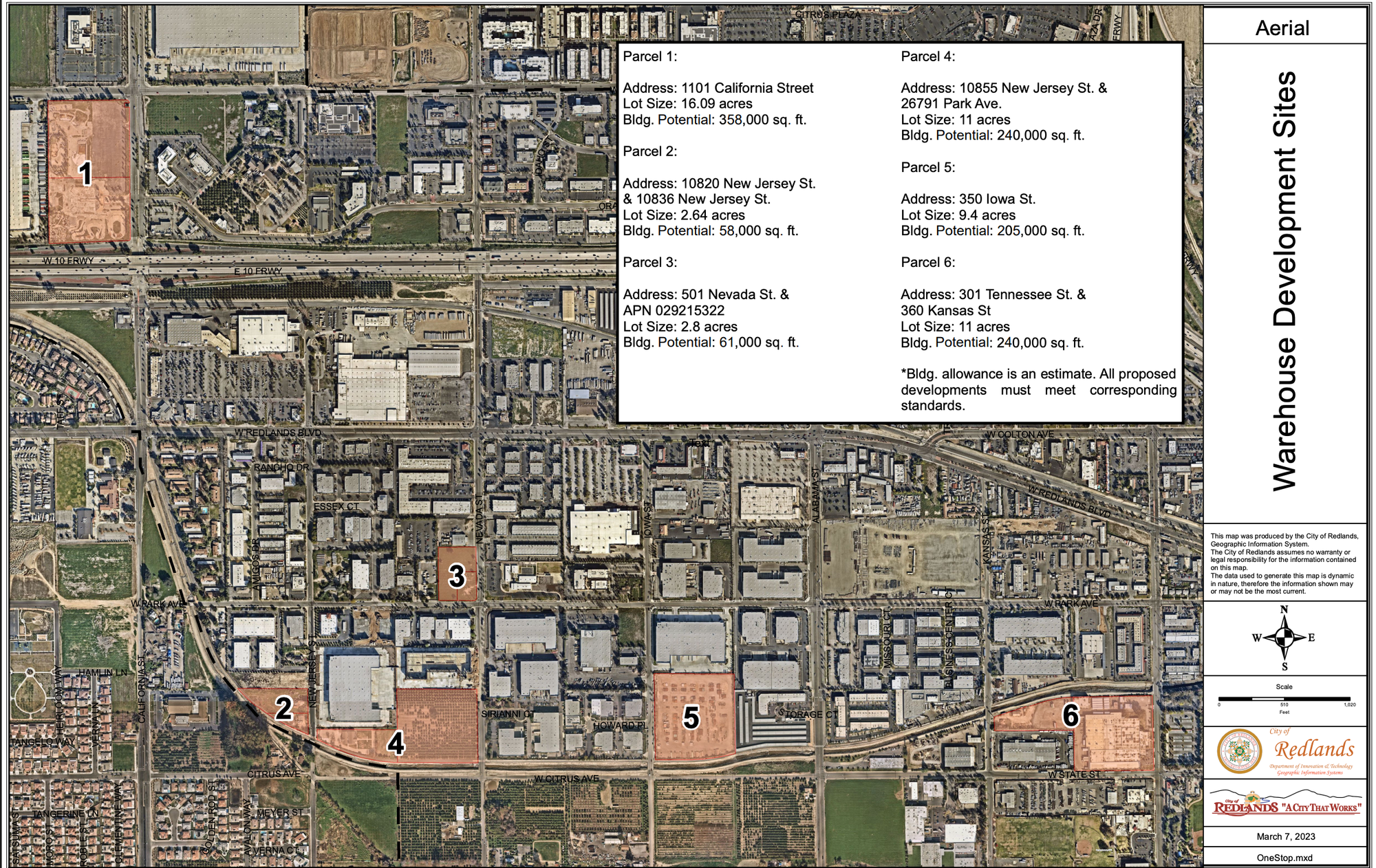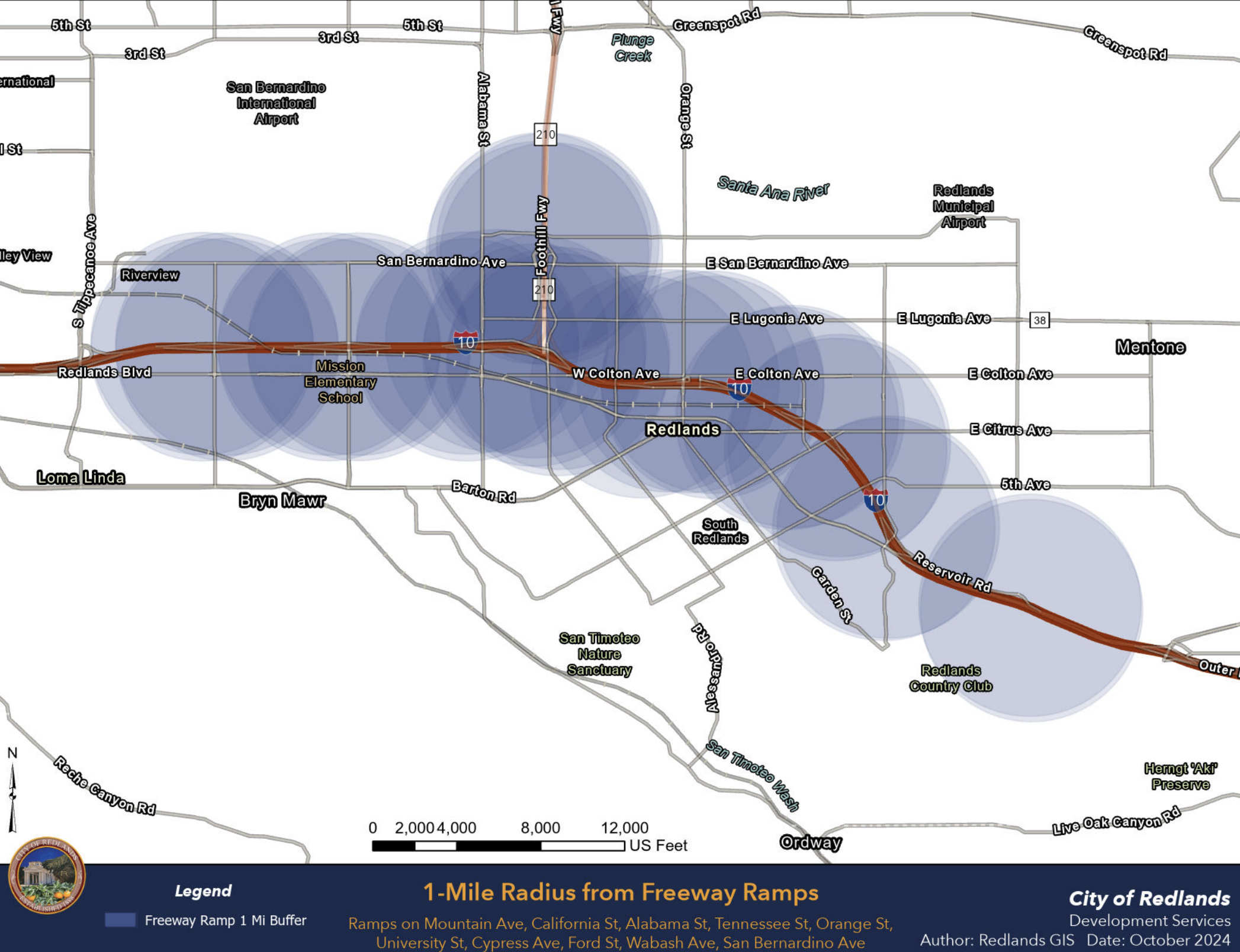Thousands gather peacefully in Redlands for No Kings rally
Redlands joined cities across the Inland Empire on Saturday in a nationwide call for democracy and resistance to authoritarian rule.
Commission directs staff to study prohibition, grandfathering and buffer zones in 4-2 vote after debate over logistics growth and zoning loopholes

REDLANDS, Calif. — The Redlands Planning Commission voted 4-2 Tuesday to explore stricter restrictions on warehouse development, including a possible citywide prohibition, as the city grapples with mounting public opposition to the spread of logistics centers.
The vote directs city staff to return with more detailed analysis of three key strategies: a ban on future warehouse construction, grandfathering of existing warehouse uses, and strategic zoning amendments that could include buffers between industrial and residential areas.
Why it matters: The decision follows more than two years of community pushback against large-scale warehouse projects. Proposed distribution centers in 2024 drew standing-room-only crowds and sharply divided public comment, ultimately leading the City Council to deny one project and approve another. Tuesday’s discussion revealed continued concern that even with limited warehouse-zoned parcels remaining, developers may find ways to build large-scale facilities.
The current ordinance, adopted in May 2023, applies to warehouse buildings 50,000 square feet or larger or those with six or more dock-high loading doors. It includes criteria such as freeway proximity and environmental standards.
While a new state law, Assembly Bill 98, mandates measures such as electric vehicle infrastructure and truck route planning, city officials note that Redlands' ordinance remains stricter in key areas, particularly its lower square footage threshold for triggering regulation and its requirement that warehouse sites be within one mile of a freeway ramp.
Planning staff presented six parcels previously identified as the largest undeveloped or underutilized warehouse-zoned sites in Redlands. Of those:
City Planner Brian Foote noted that beyond these six, staff is unaware of any other active warehouse development proposals.

Despite the map showing just a handful of available warehouse locations, some commissioners said the issue warranted deeper scrutiny. Vice Chair Matt Endsley argued that the city remains vulnerable to further warehouse development due to regional pressures and logistical incentives tied to the I-10 corridor.
“It’s not, I don’t think, unfathomable to imagine a scenario in the future where developers are incentivized to develop as many [warehouses] as they possibly can along the 10 freeway from Long Beach all the way to Arizona—and at whatever cost it could be because of the logistics infrastructure that’s been put in place,” Endsley said.

He also noted instances in which staff flagged applications proposing clusters of smaller buildings “guising itself as a light industrial” but are in reality trying to skirt the rules of the ordinance.
One proposed project by logistics warehouse developer, Newland Development Group, appears to fit this description. Currently on hold, the plans consisted of six separate buildings that would total over 250,000 square feet and include more than 20 truck bays north of the Redlands Sports Park.
Endsley added that past controversies, such as those on California and Tennessee streets also exposed a gap in city policy.
“The reason that we even brought forth this discussion and asked outside counsel’s advice was in part because we had these discussions about Tennessee. We had these discussions about California Street,” he said. “And we were left with, well, we don’t have an ordinance that prohibits this use or this development. If we did, we wouldn’t have to entertain these kinds of projects anymore.”
City staff and legal counsel outlined several legal options, including:
Best Best & Krieger LLP attorney Todd Leishman warned that eliminating existing warehouses without a phased approach could expose the city to legal risk.
“If the city moves to eliminate warehouse uses, including the existing legally established ones, without any perpetual grandfathering and without any appropriately long amortization period, the city will almost certainly end up buried in an increase of compensable taking claims,” Leishman told the commission. “That could be very expensive. It could be a billion dollars kind of expensive.”
He suggested instead grandfathering existing warehouses with limits, such as requiring energy upgrades or restricting expansion.
Opponents of further restrictions argued that the city’s existing ordinance already balances community concerns with economic development. Commissioner Mark Stanson called the ordinance “fair and balanced” and questioned the need for additional regulation.
“We’ve already accomplished what we needed to,” he said. “There are only three parcels left, and they’re not large enough for mega-warehouses.”
During public comment, most speakers urged the commission to restrict future warehousing, citing air pollution, traffic, and the eroding character of Redlands.
“We already have more than enough warehouses,” said lifelong resident Bruce Laycook. “Building more is not in the best interest of Redlands. We need affordable housing and offices, not more truck depots.”
Resident Michael Paisner warned that developers exploit gaps in California’s legal framework, particularly the California Environmental Quality Act (CEQA), to advance projects that worsen conditions in already impacted areas.
“We have the worst air quality in the country,” Paisner said. “And while common sense dictates you shouldn’t add more diesel trucks in an area with the worst air quality, developers will argue the city cannot legally deny the project because it won’t move us to a lower threshold. There is no lower threshold.”
He added: “If developers are using the law to circumvent common sense, we need ordinances that represent the will of residents and enable us to fight back.”
Over the last two decades, the Inland Empire has become a national logistics hub, transporting goods from the ports of Los Angeles and Long Beach to the rest of the country along Interstate 10.
In Redlands, approximately 12 million square feet of distribution warehouse space has been approved by the city, in addition to about 15 million square feet developed within city limits under county jurisdiction. These facilities account for roughly 20,000 daily truck trips in Redlands, according to the Warehouse CITY report.
The high volume of freight traffic contributes to worsening air quality and traffic congestion, raising public health concerns in a region already ranked among the worst in the nation for ozone pollution.
The idea of a citywide warehouse ban is not new. In April 2023, the Redlands City Council briefly considered a full prohibition but ultimately adopted the current warehouse ordinance without one. At the time, city staff advised against a total ban, citing two main reasons: the limited number of large undeveloped parcels remaining and concerns about legal nonconforming status for existing buildings.
Redlands is not alone in confronting the warehouse boom that has overtaken much of the Inland Empire. Other cities, including Riverside, Hemet and Bloomington, reflect growing resistance to warehouse expansion across the Inland Empire.
Each case reflects growing fatigue with warehouse sprawl in communities already facing heavy truck traffic, degraded air, and declining neighborhood quality.
The Redlands Planning Commission directed staff to return with refined options and examples of how a prohibition and zoning changes could be implemented.
Any ordinance would still require a recommendation from the commission and final approval from the City Council.
A time lapse on Google Earth shows the transformation of land from agriculture to warehouses:
Explore CFR coverage of warehouse development in Redlands at the link below
Sign up for our weekly newsletter